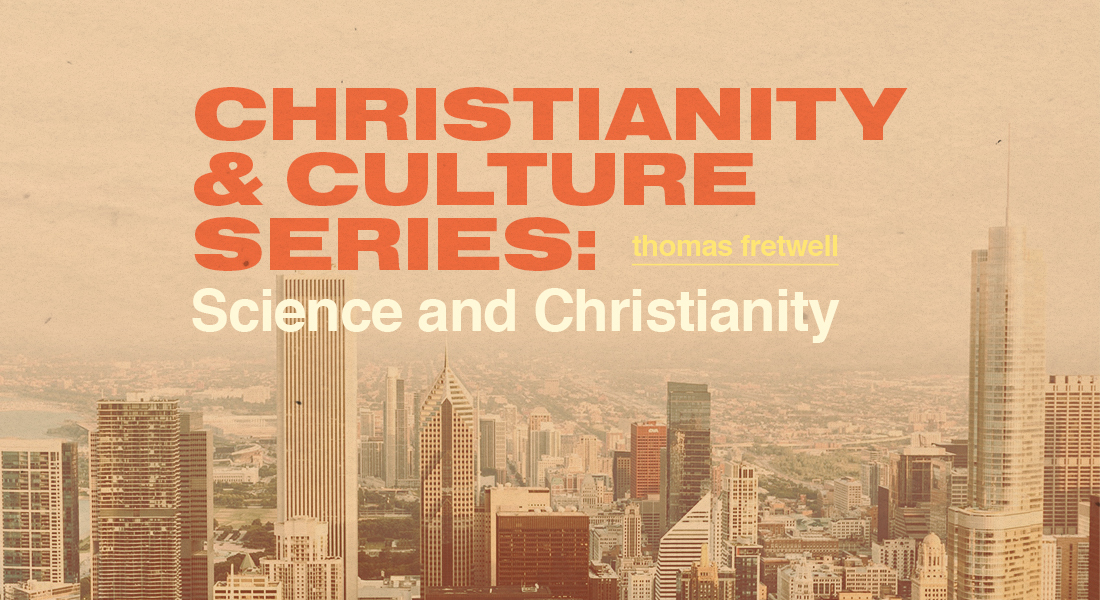
“Science without religion is lame, religion without science is blind.” – Albert Einstein
The Warfare Scenario
The world today seems to operate under the presumption that science and religion are both combatants in an apocalyptic struggle for survival. In this conflict, science is presented as the rational and objective underdog pitted against the irrational oversized forces of religion. Atheist professor Jerry Coyne’s recent book title, Faith vs. Fact: Why Science and Religion are Incompatible, is an example of this type of warfare scenario. Similarly, atheist Sam Harris charges that science is a completely factual enterprise, whereas “theology is now little more than a branch of human ignorance.”1
As ingrained as this narrative may be, it is simply false. In fact, the historical record is not one of hostility. Alistair McGrath, currently the Andreos Idreos Professor of Science and Religion at the University of Oxford, has said that this “warfare view” is now “seen as a hopelessly outmoded historical stereotype which scholarship has totally discredited.”2 What has actually happened is that these scientists have hijacked the definition of science by insisting on a purely naturalistic (atheistic) understanding of the term. They are philosophically committed to naturalism. This philosophical commitment guides their means of scientific inquiry which gives rise to methodological naturalism, which in practical terms often amounts to nothing more than atheism masquerading as “science.” Inquiry should be free to follow the evidence wherever it leads, whether that is ultimately to a natural cause or an intelligent cause.
The Real Story
The reality is that science and Christianity have shared a long and fruitful relationship with each other. Nowhere is this more beautifully illustrated than on the grounds of Cambridge University. The prestigious Cavendish laboratory, where such discoveries as the DNA double helix and the Neutron and Electron were made. A place which has produced over 29 Nobel Laureates. To enter, you pass through two large heavy wooden doors. On top of these doors sits a beautiful ornate carving that reads Magna opera Domini exquisite in omnes voluntates eius. This is a Bible verse from the Latin Vulgate3 and it is a quote from Psalm 111:2.
“Great are the works of the Lord; they are studied by all who delight in them.”
Why would one of the most prestigious scientific laboratories have such a quotation at its entrance if, as we are told, science and religion are incompatible? Even more amusing is the fact that it would have been these doors that atheist scientists Francis Crick and Jim Watson rushed through in 1953, after discovering the working of DNA; they were keen to get to the pub across the street, “to tell everyone within hearing that we had found the secret of life.”4
As it is, this inscription stands as a testimony to the Christian heritage that was so important in the rise of modern science. The original inscription was put there at the behest of the Cavendish Laboratory’s first professor James Clerk Maxwell. The four mathematical equations of electricity and magnetism that Maxwell produced and his work in areas such as electromagnetic theory and thermodynamics are widely believed to have paved the way for other great discoveries of 20th-century physics. Maxwell was a believer who had extensive knowledge of the Bible and had served as an elder in the Church he helped plant in Scotland. He strongly believed that scientific research was to be conducted in light of the Bible and that such endeavors were a way to study the works of God. His biographers record a prayer, very reminiscent of Psalm 111:2, which they found amongst his papers after his death:
“Almighty God, who created man in Thine own image, and made him a living soul that he might seek after Thee and have dominion over Thy creatures, teach us to study the works of Thy hands, that we may subdue the earth to our use and strengthen the reason for Thy service; and so to receive Thy blessed Word, that we may believe on Him Whom Thou hast sent, to give us the knowledge of salvation and the remission of our sins. All of which we ask in the name of the same Jesus Christ, our Lord.”5
Such a view gave rise to modern physics and is very different from the usual narrative that you hear from people today when they insist that religious believers are ignorant, keeping the world in a backward state and opposing the advancements of science at every turn.
Einstein’s Heroes
Perhaps another example will finally lay to rest this idea that science is opposed to the Bible. Most people will know the name of scientist Albert Einstein. His Theories of Relativity are fundamental to modern Physics. Of course, even the great Einstein would have had his own scientific heroes. You can learn a lot about a person by spending some time looking around their study! Einstein’s study had three pictures of his scientific heroes. They were Isaac Newton (1642–1727), perhaps the greatest scientist who ever lived, who among other things developed the theory of universal gravitation and the three laws of motion. Then there was Michael Faraday (1791–1867), who was known for his skill at experimentation. He discovered benzene, invented the transformer, and his work also involved demonstrating that magnetism could produce electricity. The third picture was of James Clerk Maxwell who we have already mentioned. Now there is one thing that all these great scientific minds had in common – a firm belief in the God of the Bible. All these men saw their scientific work as a way to further understand the God who created the universe. They expected the natural world to be orderly and discoverable, precisely because God is a God of order. They were all active in church life and even produced theological volumes along with their scientific works.
The Christian Roots of Science
So much for the “warfare scenario!” In fact, the opposite appears to be true: The scientific revolution was birthed from within a Judeo-Christian framework. Why was this? Well in order to operate, science has to work with a number of assumptions about the world. These assumptions are best explained by the Christian worldview. It is the God described in the Bible that can account for the existence of a rational and orderly cosmos. The concepts required by the scientific method, such as testable and repeatable experimentation, all assume that there is uniformity to the universe. God upholds the universe in such a consistent way, we can fully expect the universe to function according to specific laws that we can study. The great philosopher of science Alfred North Whitehead credited the origin of science to Christianity’s “insistence on the rationality of God”.6
If the secular view is true, that the universe originated from nothing by random chance processes, on what basis do we expect it to operate in a predictable and uniform manner? It is almost taken for granted today by those studying science that the universe operates according to laws that are comprehensible to humans. New atheist and physicist Steven Weinberg writes that “all my experience as a physicist leads me to believe that there is order to the universe … there is a simplicity, a beauty, that we are finding in the rules that govern matter that mirrors something that is built into the logical structure of the universe at a very deep level.”7 Many are struck by how strange this is and admit there is no real rational explanation for it within their atheistic worldview. Such a view is better understood as stemming from Christianity, which believes in a God who is rational, powerful and separate from His creation. This is why science blossomed in the fertile soil of the Christian west where God was envisioned as both the Creator and the Lawgiver. Christianity was long seen as the worldview that could logically account for the universe.
Notes:
1 Sam Harris, The End of Faith: Religion, Terror, and the End of Reason. London: Simon & Schuster UK. 2006. 173.
2 Alister McGrath, The Dawkins Delusion: Atheist Fundamentalism and the Denial of the Divine. London: SPCK. 2007. 24.
3 The aforementioned doors are those to the Old laboratory. The Bible verse is also seen on the new doors.
4 J.D. Watson, The Double Helix, London: Weidenfeld & Nicolson (1968), 197.
5 L. Campbell & W. Garnett, The Life of James Clerk Maxwell, London: Macmillan (1882), 160.
6 Alvin. J. Schmidt, How Christianity Changed the World. Grand Rapids: Zondervan. 2004. 219.
7 Steven Weinberg, Facing Up: Science and Its Cultural Adversaries. Cambridge: Harvard University Press, 2001. 24-25.






